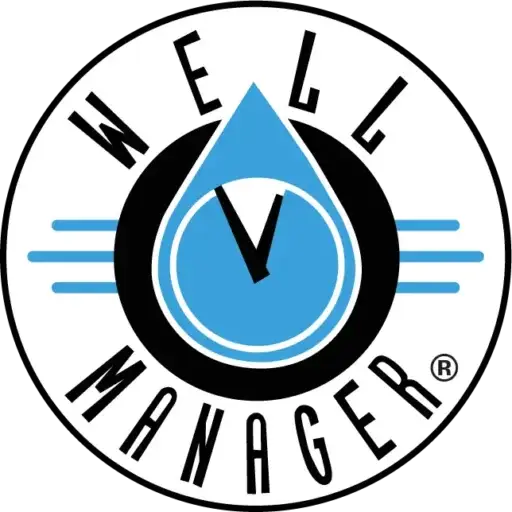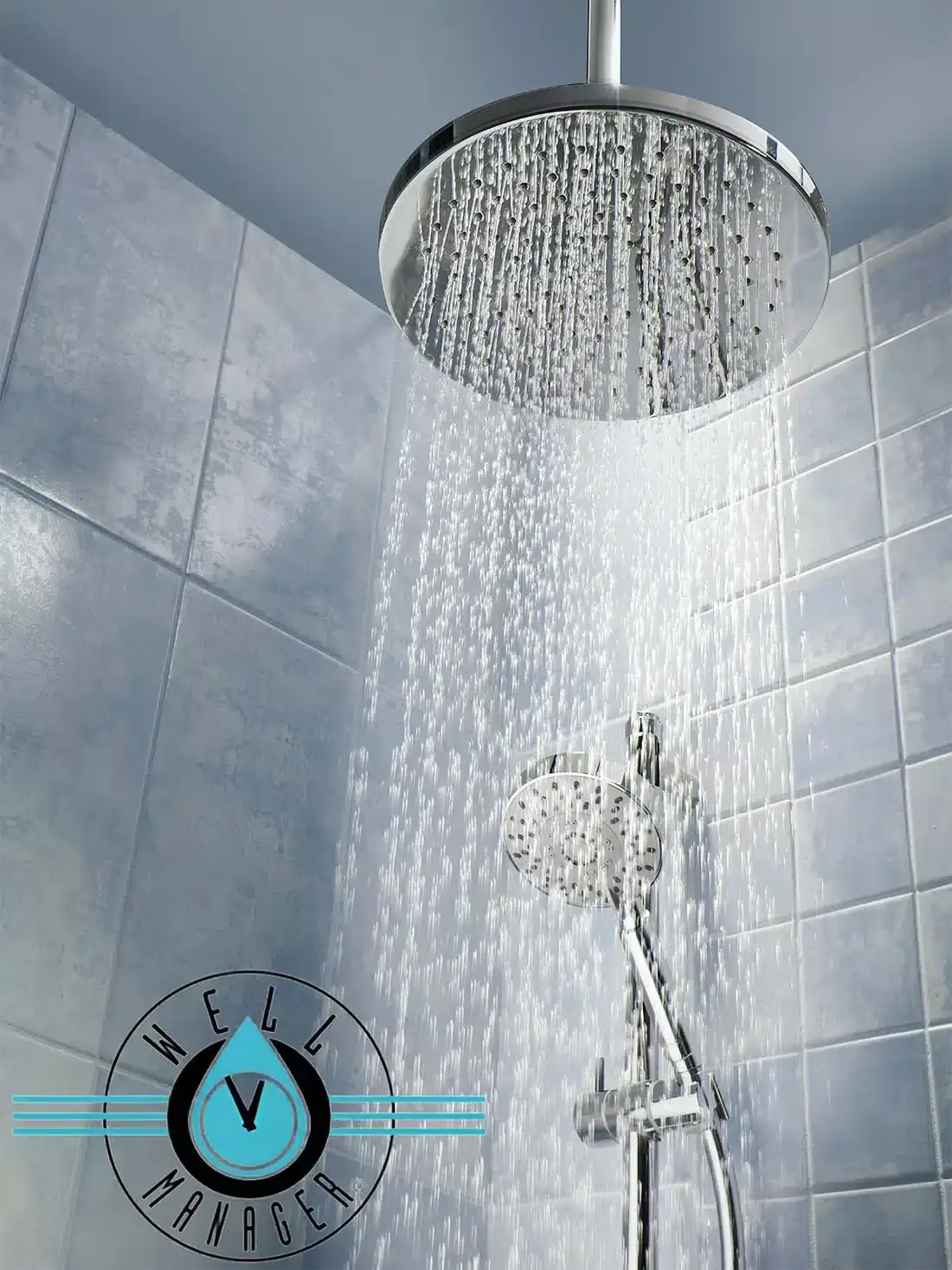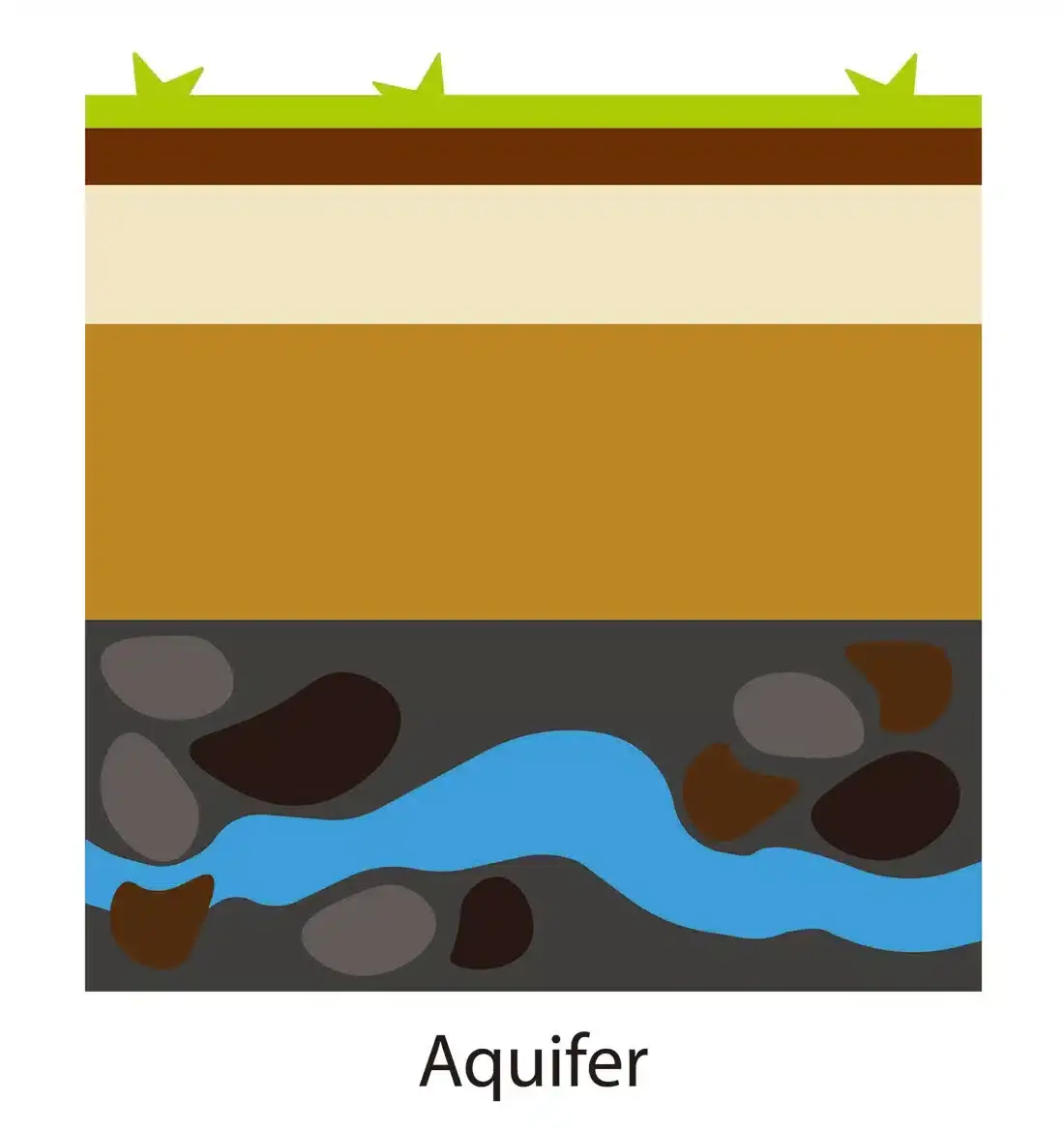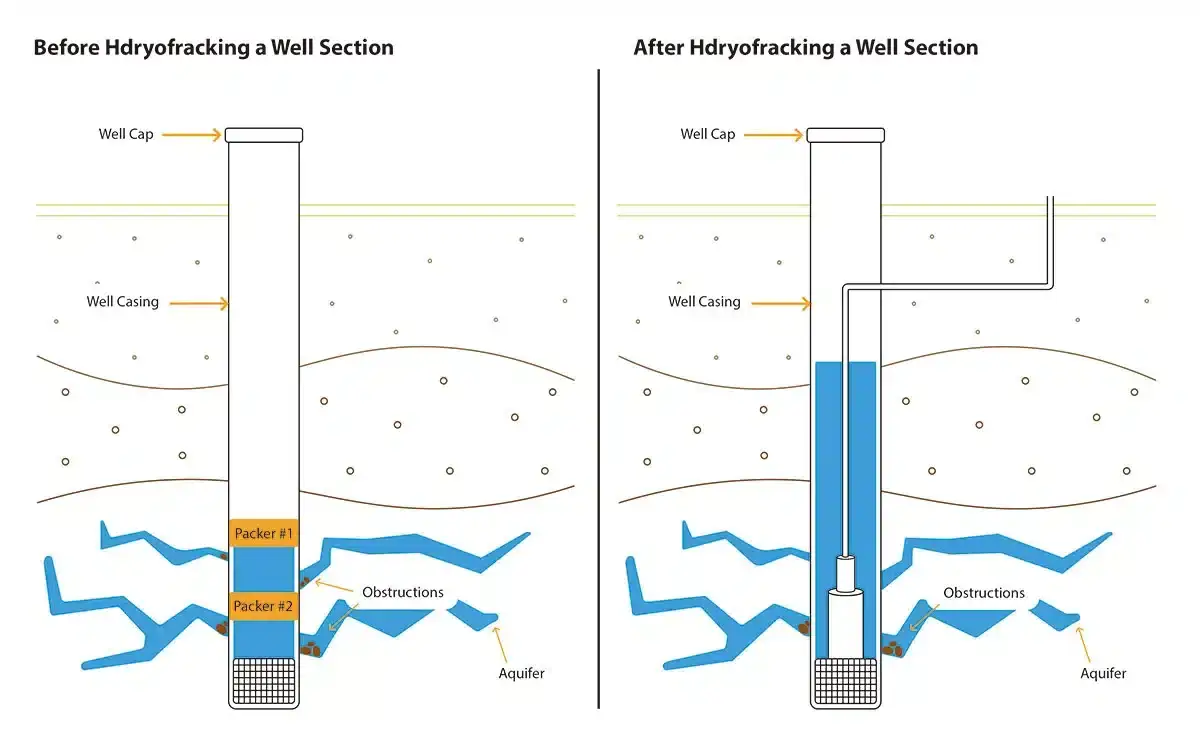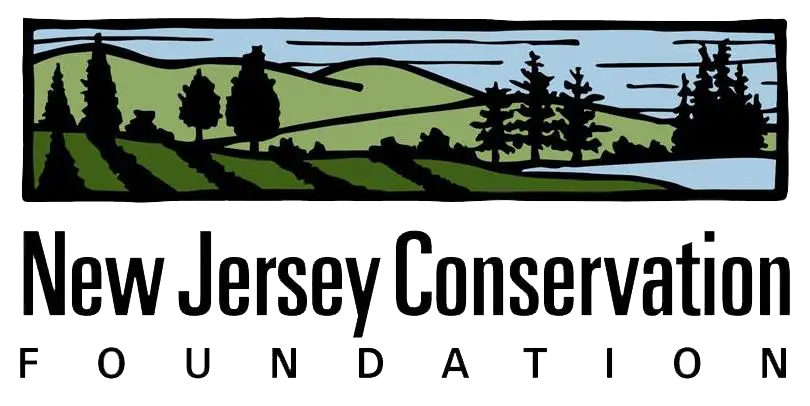Maintaining a consistent water flow is a daily battle for homeowners with low-yield wells. While the reliance on hydrofracking as a solution is widespread, it’s important to understand its limitations. While it can boost yield in some instances, the process carries significant environmental and structural risks, and the outcomes are far from certain.
At Well Manager, we offer a proven, eco-friendly alternative that ensures reliable water management without the risks associated with hydrofracking. Hydrofracking comes with pros and cons. Well Manager systems are the superior, long-term solution for low-yield wells.
What is Hydrofracking, and How Does it Increase Well Yield?
Hydrofracking involves injecting high-pressure water into bedrock to expand natural fractures and increase water flow to the well. It’s a method that has gained popularity in oil extraction and has also been adapted for use in low-yield water wells. Hydrofracking aims to create new pathways in the rock, allowing more groundwater to seep into the well.
It’s crucial to recognize that hydrofracking is not a permanent fix. Its success depends heavily on the type of rock formation, and even when it does increase yield, the improvement is often short-lived. Many homeowners find their relief fleeting, as they soon face the same water issues again.
Moreover, the potential for long-term damage is a serious concern with hydrofracking. The high-pressure water can compromise the structural integrity of your well, leading to future complications. Many homeowners may not be willing to take this risk.
What is an Aquifer and How Does it Impact Well Yield?
Aquifers are underground layers of water-bearing rock that store groundwater. Wells tap into these aquifers to provide water for homes and businesses. In a healthy well system, groundwater naturally flows through cracks and fissures in the rock to supply water. Water flow decreases when these pathways become blocked by sediment, mineral buildup, or overuse, leading to a low-yield well.
Hydrofracking forces open these natural pathways, but it does nothing to address the root cause of the blockage, and it risks causing environmental damage in the process. This is where Well Manager systems offer a critical advantage: they maximize the natural flow of water without disrupting the structure of the aquifer or causing potential harm to the well.
Why Hydrofracking is Not a Perfect Solution for Low-Yield Wells
- It’s a Gamble: Hydrofracking is unpredictable. In some cases, wells experience an increase in yield, while others see no improvement or even face worsened conditions after a few years. The process doesn’t guarantee long-term results, so homeowners are often left searching for alternative solutions later. On the other hand, Well Manager provides a reliable and sustainable solution, ensuring that your household’s water needs are consistently met.
- Short-Term Fix: Even when hydrofracking does work, its results are usually temporary. The process creates new fractures in the bedrock, but these cracks can close over time, reducing the water flow again. Our Well Manager systems focus on long-term water management, allowing homeowners to use their well efficiently without relying on quick fixes.
- Well Health and Structural Concerns: Hydrofracking can compromise the structural integrity of your well. The high-pressure water injection can cause fractures to collapse or introduce contaminants into the water supply, especially if the well is shallow. Over time, these issues can lead to costly repairs or the need for a new well entirely.
- Environmental Risks: Hydrofracking poses risks to your well and the surrounding environment. The process can introduce contaminants into groundwater supplies and negatively impact neighboring wells that share the same aquifer. In contrast, Well Manager systems work with your well’s natural yield, preserving the aquifer and protecting the environment.
Correcting Misconceptions About Hydrofracking
There’s a common belief that hydrofracking is always effective at increasing well yield, but that’s not always true. While some wells see an improvement, others experience minimal gains or, worse, damage to the well structure. Hydrofracking is a temporary solution that doesn’t address the underlying issues of low well yield.
Additionally, contamination concerns are valid, particularly in shallow wells. Well Manager eliminates these risks by offering a solution that preserves the well’s natural structure and safeguards your water supply.
Choose Well Manager for Reliable, Long-Term Water Management
While hydrofracking may seem like a convenient solution for low-yield wells, it comes with significant risks to the environment and your well’s structure. At Well Manager, we offer a better alternative. Our systems provide consistent water flow, preserve the aquifer, and protect your well’s long-term health without the uncertainties and environmental risks associated with hydrofracking.
Unlike hydrofracking, Well Manager offers a non-invasive, environmentally friendly solution that guarantees consistent water flow for your household. Our system is designed to work with your well, maximizing its natural yield without disrupting the surrounding rock formations or causing long-term damage.
By choosing Well Manager, you’re investing in a proven, eco-friendly solution that will serve your household for years. Contact us today to learn how Well Manager can transform your water management system and guarantee a consistent, reliable water supply.
Related Reading
- Understanding Low Yield Wells: A Crucial Aspect of Water Resource Management
- Understanding the Symptoms of a Low-Yield Well
- How to Survive a Drought with a Low Yield Well
- Who Used All the Water?!?!—Understanding Your Well Recovery Rate
- Combating Low Yields During COVID-19: Getting the Most out of Your Well While You’re Spending More Time at Home
